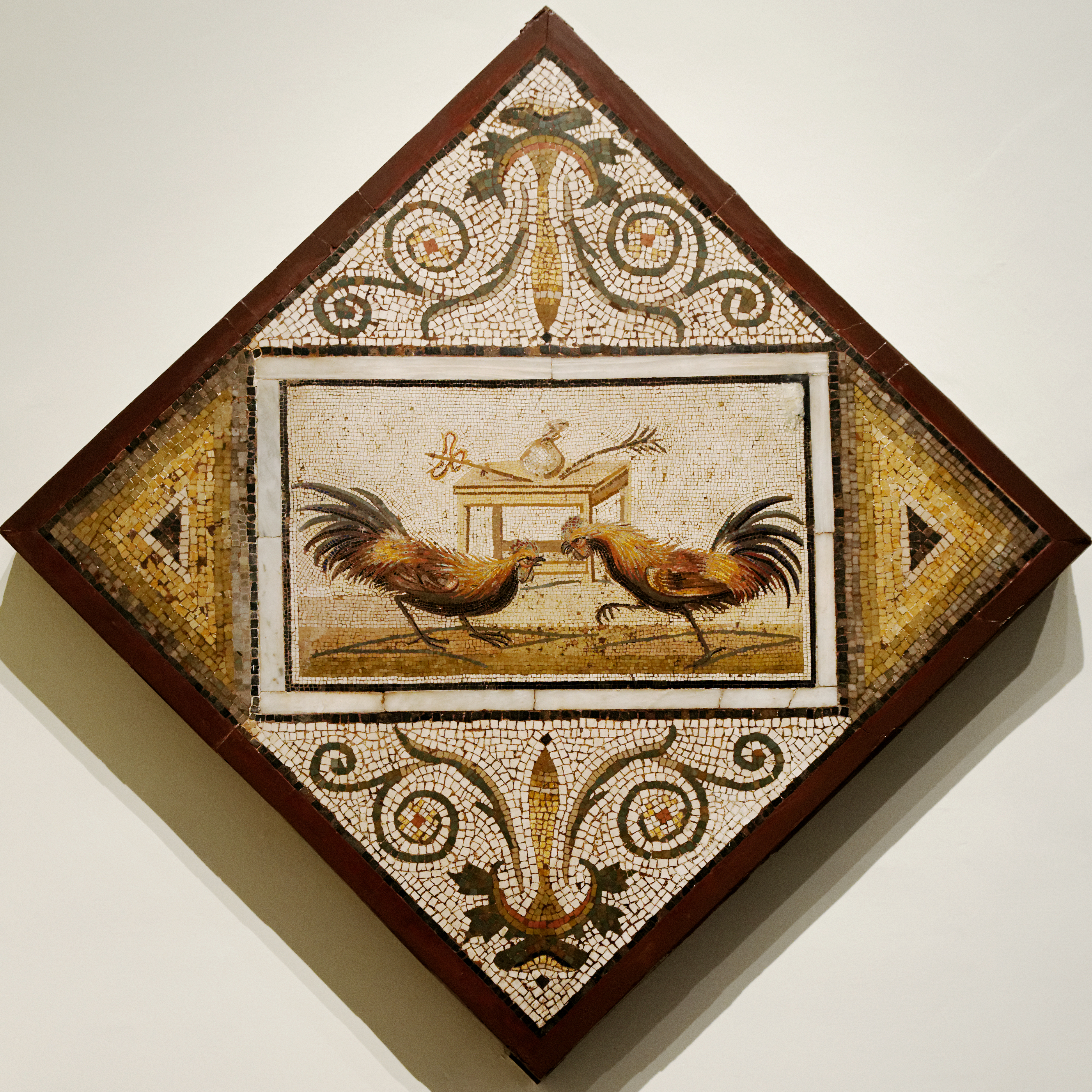|
Wantilan
A wantilan (Balinese script: ᬯᬦ᭄ᬢᬶᬮᬦ᭄) is a Balinese pavilion (''bale'') used for activities involving large crowds. A wantilan is the largest type of ''bale'' in Balinese architecture. A wantilan is basically a large wall-less hall placed under a large multi-tiered roof. A wantilan as a public building is usually located at a village's main square or main junction and functions as an open hall to hold large community activities such as meeting halls or a public musical gamelan performance. A wantilan is also a religious building, an integral part of Balinese temples used to hold the Balinese cockfighting ceremony (Balinese ''tajen''). Form The wantilan is an imposing pavilion built over a low plinth and topped with two or three tiered pyramidal roofs. The building has no walls. The enormous roof is traditionally supported by four main posts and twelve or twenty peripheral posts. The roof is normally constructed in two or three tiers (Balinese ''matumpang''), covered ... [...More Info...] [...Related Items...] OR: [Wikipedia] [Google] [Baidu] |
Cockfighting Pavilion, Pura Taman Ayun 1490
Cockfighting is a blood sport involving domesticated roosters as the combatants. The first documented use of the word gamecock, denoting use of the cock as to a "game", a sport, pastime or entertainment, was recorded in 1634, after the term "cock of the game" used by George Wilson, in the earliest known book on the sport of cockfighting in ''The Commendation of Cocks and Cock Fighting'' in 1607. But it was during Ferdinand Magellan's voyage of discovery of the Philippines in 1521 when modern cockfighting was first witnessed and documented for Westerners by the Italian Antonio Pigafetta, Magellan's chronicler, in the Kingdom of Taytay. The gamecocks (not to be confused with game birds) are specially bred and conditioned for increased stamina and strength. Male and female chickens of such a breed are referred to as gamefowl. Cocks are also bred to be aggressive towards other males of their species. Wagers are often made on the outcome of the match, held in a ring called a cock ... [...More Info...] [...Related Items...] OR: [Wikipedia] [Google] [Baidu] |
Pura Taman Ayun
Pura Taman Ayun (Balinese script: ᬧᬸᬭᬢᬫᬦ᭄ᬅᬬᬸᬦ᭄) is a compound of Balinese temple and Balinese architecture#Landscape architecture, garden located in Mengwi district (''kecamatan'') in Badung Regency, Bali, Indonesia. Its water features are an integral part of the local ''Subak (irrigation), subak'' system. Location The temple is in the middle of the town of Mengwi, 19 km north of Denpasar. Description Taman Ayung, meaning "beautiful garden", is the second-largest temple in Bali. Its whole compound covers , a rectangular piece of land oriented north-south and surrounded to the west, south and east by a large body of water. It is accessed by a bridge on the south side. It has the three sections common to holy temples: outer courtyard (''jabaan'' or ''Nista Mandala''), middle courtyard (''jaba tengah'' or ''Madia Mandala'') and inner sanctuary (''jeroan'' or ''jaba jero'', or ''Utama Mandala''). Each courtyard is separated from the others by a ''candi b ... [...More Info...] [...Related Items...] OR: [Wikipedia] [Google] [Baidu] |
Cockfighting
Cockfighting is a blood sport involving domesticated roosters as the combatants. The first documented use of the word gamecock, denoting use of the cock as to a "game", a sport, pastime or entertainment, was recorded in 1634, after the term "cock of the game" used by George Wilson, in the earliest known book on the sport of cockfighting in ''The Commendation of Cocks and Cock Fighting'' in 1607. But it was during Ferdinand Magellan's voyage of discovery of the Philippines in 1521 when modern cockfighting was first witnessed and documented for Westerners by the Italian Antonio Pigafetta, Magellan's chronicler, in the Kingdom of Taytay. The gamecocks (not to be confused with game birds) are specially bred and conditioned for increased stamina and strength. Male and female chickens of such a breed are referred to as gamefowl. Cocks are also bred to be aggressive towards other males of their species. Wagers are often made on the outcome of the match, held in a ring called a ... [...More Info...] [...Related Items...] OR: [Wikipedia] [Google] [Baidu] |
Balinese Temple
A Balinese temple, or better-known as () is a Balinese culture, Bali-style (commonly associated to Hindu temple, Hindu) temple, it serves as the place of worship for adherents of Balinese Hinduism in Indonesia. Puras are built following rules, style, guidance, and rituals found in Balinese architecture. Most puras are found on the island of Bali, where Hinduism is the predominant religion, however, many puras exist in other parts of Indonesia where significant numbers of Balinese people reside. Mother Temple of Besakih is the most important, largest, and holiest temple in Bali. Many Puras have been built in Bali, leading it to be titled "the Island of a Thousand Puras." Etymology The term ''pura'' originates from the Sanskrit word (''Pur (Vedic), -pur, -puri, -pura, -puram, -pore''), meaning "city," "walled city," "towered city," or "palace," which was adopted with the Indianization of Southeast Asia and the Hinduism in Southeast Asia, spread of Hinduism, especially in the Ind ... [...More Info...] [...Related Items...] OR: [Wikipedia] [Google] [Baidu] |
Candi Bentar
Candi bentar, or split gateway, is a classical Javanese and Balinese architecture, Balinese gateway entrance commonly found at the entrance of religious compounds, Kraton (Indonesia), palaces, or cemeteries in Indonesia. It is a Candi of Indonesia, candi-like structure split perfectly in two to create a passage in the center for people to walk through. In contrast to the very ornate shape and decoration of the main faces, the sides of the passage are left completely plain. The passage is usually elevated with a flight of stairs to reach it. A candi bentar is commonly found in Java, Bali, and Lombok. Form Candi bentar has a candi of Indonesia, candi-like form but is split perfectly in two to create a symmetrical image. Candi bentar characteristically has a stepped profile, which can be heavily decorated in the case of Balinese candi bentar. The two inner surfaces are always left sheer and unadorned as if the structure has been split in two. There are several different styles of ... [...More Info...] [...Related Items...] OR: [Wikipedia] [Google] [Baidu] |
Animal Sacrifice In Hinduism
The practice of Hindu animal sacrifice is in recent times mostly associated with Shaktism, and in currents of folk Hinduism strongly rooted in local popular or tribal traditions. Animal sacrifices were an important part of the ancient Vedic Era in India, and are mentioned in Vedas as Yajna. Over the period shape of rituals and sacrifice changed with shifting of pastoral economy of Early-vedic period to agriculture centric economy of Later-vedic. This shift in economy also impacted the rituals and sacrifice replacing animal sacrifice with grains(rice,wheat etc.) in Srauta Yajnas. During Medieval period religious movements like Bhakti movement also had a great impact on this tradition evident in Hindu scripture like Brahma Vaivarta Purana which forbids the Srauta Asvamedha Horse sacrifice in Kali Yuga. The perception that animal sacrifice was only practiced in ancient Non-Vedic Era is opposed by instances like Srauta Ashvamedha and other rituals that are rooted in Vedas. Bo ... [...More Info...] [...Related Items...] OR: [Wikipedia] [Google] [Baidu] |
Gambling
Gambling (also known as betting or gaming) is the wagering of something of Value (economics), value ("the stakes") on a Event (probability theory), random event with the intent of winning something else of value, where instances of strategy (game theory), strategy are discounted. Gambling thus requires three elements to be present: consideration (an amount wagered), risk (chance), and a prize. The outcome of the wager is often immediate, such as a single roll of dice, a spin of a roulette wheel, or a horse crossing the finish line, but longer time frames are also common, allowing wagers on the outcome of a future sports contest or even an entire sports season. The term "gaming" in this context typically refers to instances in which the activity has been specifically permitted by law. The two words are not mutually exclusive; ''i.e.'', a "gaming" company offers (legal) "gambling" activities to the public and may be regulated by one of many gaming control boards, for example, the ... [...More Info...] [...Related Items...] OR: [Wikipedia] [Google] [Baidu] |
Animal Sacrifice
Animal sacrifice is the ritual killing and offering of animals, usually as part of a religious ritual or to appease or maintain favour with a deity. Animal sacrifices were common throughout Europe and the Ancient Near East until the spread of Christianity in Late Antiquity, and continue in some cultures or religions today. Human sacrifice, where it existed, was always much rarer. All or only part of a sacrificial animal may be offered; some cultures, like the Ancient Greeks ate most of the edible parts of the sacrifice in a feast, and burnt the rest as an offering. Others burnt the whole animal offering, called a Holocaust (sacrifice), holocaust. Usually, the best animal or best share of the animal is the one presented for offering. Animal sacrifice should generally be distinguished from the religiously prescribed methods of ritual slaughter of animals for normal consumption as food. During the Neolithic Revolution, early humans began to move from hunter-gatherer cultures toward ... [...More Info...] [...Related Items...] OR: [Wikipedia] [Google] [Baidu] |
Balinese Hinduism
Balinese Hinduism (; , ''Hindusmé Bali''), also known in Indonesia as ''Agama Hindu Dharma'', ''Agama Tirtha'', ''Agama Air Suci'' or ''Agama Hindu Bali'', is the form of Hinduism practised by the majority of the population of Bali.McDaniel, June (2013), A Modern Hindu Monotheism: Indonesian Hindus as ‘People of the Book’. The Journal of Hindu Studies, Oxford University Press, This is particularly associated with the Balinese people residing on the island, and represents a distinct form of Hindu worship incorporating local animism, Veneration of the dead#Indian Subcontinent, ancestor worship or ''Pitru Paksha'', and reverence for Buddhist saints or ''Bodhisattva, Bodhisattava''. The population of Religion in Indonesia, Indonesian islands is predominantly Muslim (87%).Indonesia: Religions Encyclopaedia Britanni ... [...More Info...] [...Related Items...] OR: [Wikipedia] [Google] [Baidu] |
Ubud
Ubud () is a town in the Gianyar Regency of Bali, Indonesia. Ubud has no status, that is part of the eponymous Ubud District of Gianyar. Promoted as an arts and culture centre, Ubud has developed a large tourism industry. It forms a northern part of the Greater Denpasar metropolitan area (known as ''Sarbagita''). Ubud is an administrative district (''kecamatan'') with a population of 74,800 (as of the 2020 Census)Badan Pusat Statistik, Jakarta, 2021. in an area of 42.38 km2. The central area of Ubud ''desa'' (village) has a population of 11,971 and an area of 6.76 km2, and receives more than three million foreign tourists each year. The area surrounding the town is made up of farms, rice paddies, agroforestry plantations, and tourist accommodations. As of 2018, more tourists visited Ubud than Denpasar to the south. History Eighth-century legend tells of a Javanese people, Javanese priest, Rsi Markandya, who meditated at the confluence of two rivers (an auspicious ... [...More Info...] [...Related Items...] OR: [Wikipedia] [Google] [Baidu] |
Balinese Script
The Balinese script, natively known as and , (Balinese language, Balinese: ᬅᬓ᭄ᬱᬭᬩᬮᬶ) is an abugida used in the island of Bali, Indonesia, commonly for writing the Austronesian language, Austronesian Balinese language, Kawi language, Old Javanese, and the liturgical language Sanskrit. With some modifications, the script is also used to write the Sasak language, used in the neighboring island of Lombok. The script is a descendant of the Brahmi script, and so has many similarities with the modern scripts of South and Southeast Asia. The Balinese script, along with the Javanese script, is considered the most elaborate and ornate among Brahmic scripts of Southeast Asia.Kuipers, Joel (2003)''Indic Scripts of Insular Southeast Asia: Changing Structures and Functions''. Tokyo: Tokyo University of Foreign Studies. Though everyday use of the script has largely been supplanted by the Latin alphabet, the Balinese script has a significant prevalence in many of the island's ... [...More Info...] [...Related Items...] OR: [Wikipedia] [Google] [Baidu] |










